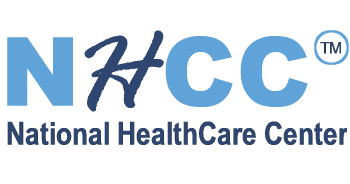 Improve cardiovascular health and quality of life through prevention, detection, and treatment of risk factors for heart attack and stroke; early identification and treatment of heart attacks and strokes; prevention of repeat cardiovascular events; and reduction in deaths from cardiovascular disease.*
Improve cardiovascular health and quality of life through prevention, detection, and treatment of risk factors for heart attack and stroke; early identification and treatment of heart attacks and strokes; prevention of repeat cardiovascular events; and reduction in deaths from cardiovascular disease.*
Overview
Heart disease is the leading cause of death in the United States. Stroke is the fifth leading cause of death in the United States. Together, heart disease and stroke, along with other cardiovascular disease, are among the most widespread and costly health problems facing the Nation today, accounting approximately $320 billion in health care expenditures and related expenses annually. Fortunately, they are also among the most preventable.
The leading modifiable (controllable) risk factors for heart disease and stroke are:
- High blood pressure
- High cholesterol
- Cigarette smoking
- Diabetes
- Unhealthy diet and physical inactivity
- Overweight and obesity
Over time, these risk factors cause changes in the heart and blood vessels that can lead to heart attacks, heart failure, and strokes. It is critical to address risk factors early in life to prevent these devastating events and other potential complications of chronic cardiovascular disease.
Controlling risk factors for heart disease and stroke remains a challenge. High blood pressure, cigarette smoking, and high blood cholesterol are still major contributors to the national epidemic of cardiovascular disease. High blood pressure affects approximately 1 in 3 adults in the United States, and only about half of them have it under control. High sodium intake can increase blood pressure and the risk for heart disease and stroke, yet about 90% of American adults exceed their daily recommendation for sodium intake.
The risk of Americans developing and dying from cardiovascular disease would be substantially reduced if major improvements were made across the U.S. population in diet and physical activity, control of high blood pressure and cholesterol, smoking cessation, and appropriate aspirin use.
Why Are Heart Disease and Stroke Important?
Currently more than 1 in 3 adults (85.6 million) live with 1 or more types of cardiovascular disease. In addition to being the first and fifth leading causes of death, heart disease and stroke result in serious illness and disability, decreased quality of life, and hundreds of billions of dollars in economic loss every year.
The burden of cardiovascular disease is disproportionately distributed across the population. There are significant disparities in the following based on gender, age, race/ethnicity, geographic area, and socioeconomic status:
- Prevalence of risk factors
- Access to treatment
- Appropriate and timely treatment
- Treatment outcomes
- Mortality
Understanding Heart Disease and Stroke
Disease does not occur in isolation, and cardiovascular disease is no exception. Cardiovascular health is significantly influenced by the physical, social, and political environment, including:
- Maternal and child health
- Access to educational opportunities
- Availability of healthy foods, physical education, and extracurricular activities in schools
- Opportunities for physical activity, including access to safe and walkable communities
- Access to healthy foods
- Quality of working conditions and worksite health
- Availability of community support and resources
- Access to affordable, quality health care
Emerging Issues in Heart Disease and Stroke
No national system exists to collect data on how often cardiovascular events occur or recur, or how often they result in disability and death. Similarly, there is inadequate tracking of quality indicators across the continuum of care, from risk factor prevention through treatment of acute events to posthospitalization and rehabilitation. New measures and tools are needed to monitor improvement in cardiovascular health and cardiovascular care over the next decade.
Other emerging issues in cardiovascular health include:
- Defining and measuring overall heart disease and prevention health
- Assessing and communicating lifetime risk for cardiovascular disease
- Addressing depression as a risk factor for and associated condition of heart disease and stroke
- Examining cognitive impairment due to cardiovascular disease
- Dealing with substantial gaps in the cardiovascular surveillance system
Footnote
*Cardiovascular events are defined for this purpose as heart attacks, hospitalizations for heart failure, and strokes.
Credits go to HealthyPeople.gov. To READ MORE you can visit the article page at https://www.healthypeople.gov/2020/topics-objectives/topic/heart-disease-and-stroke

